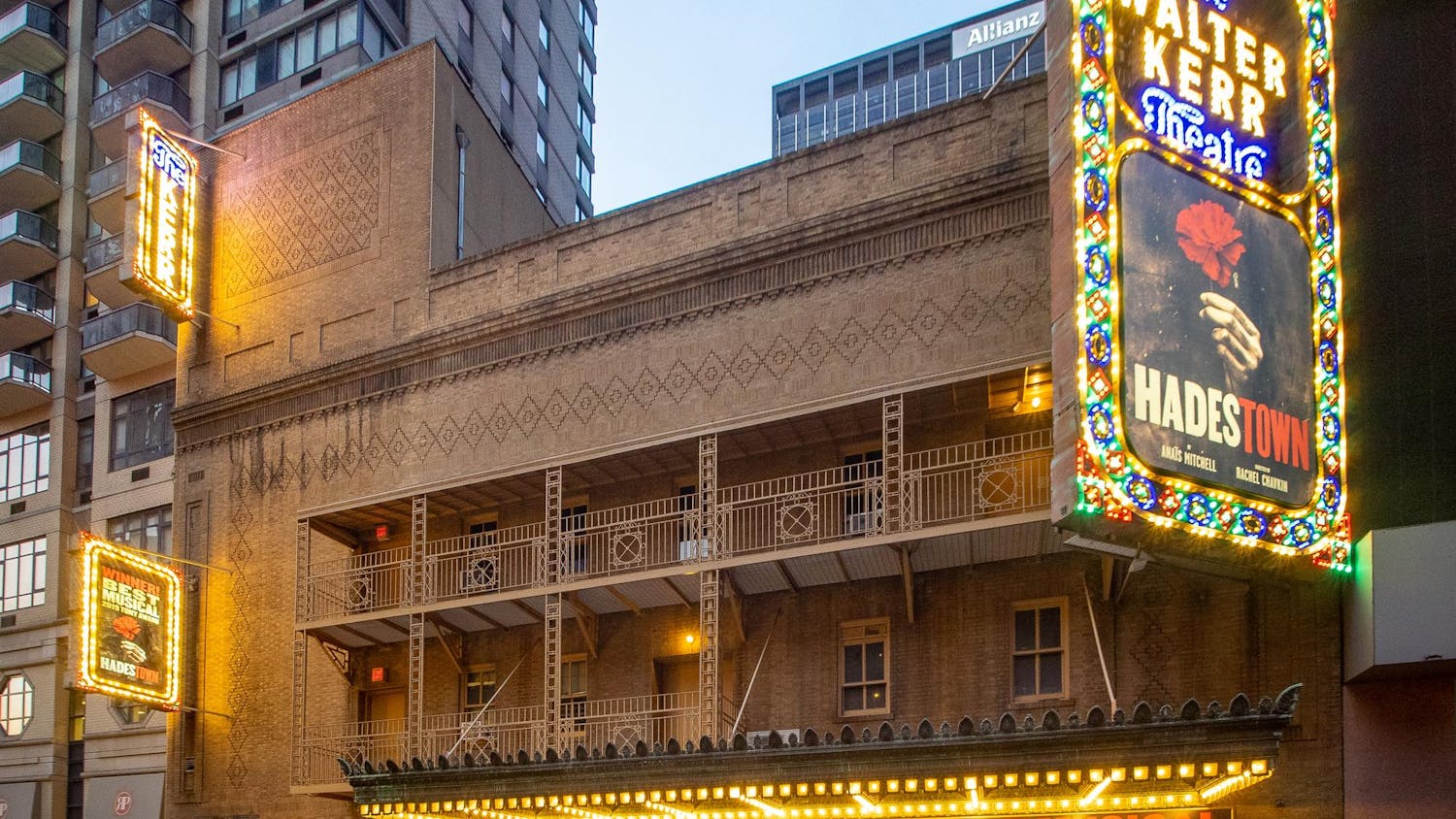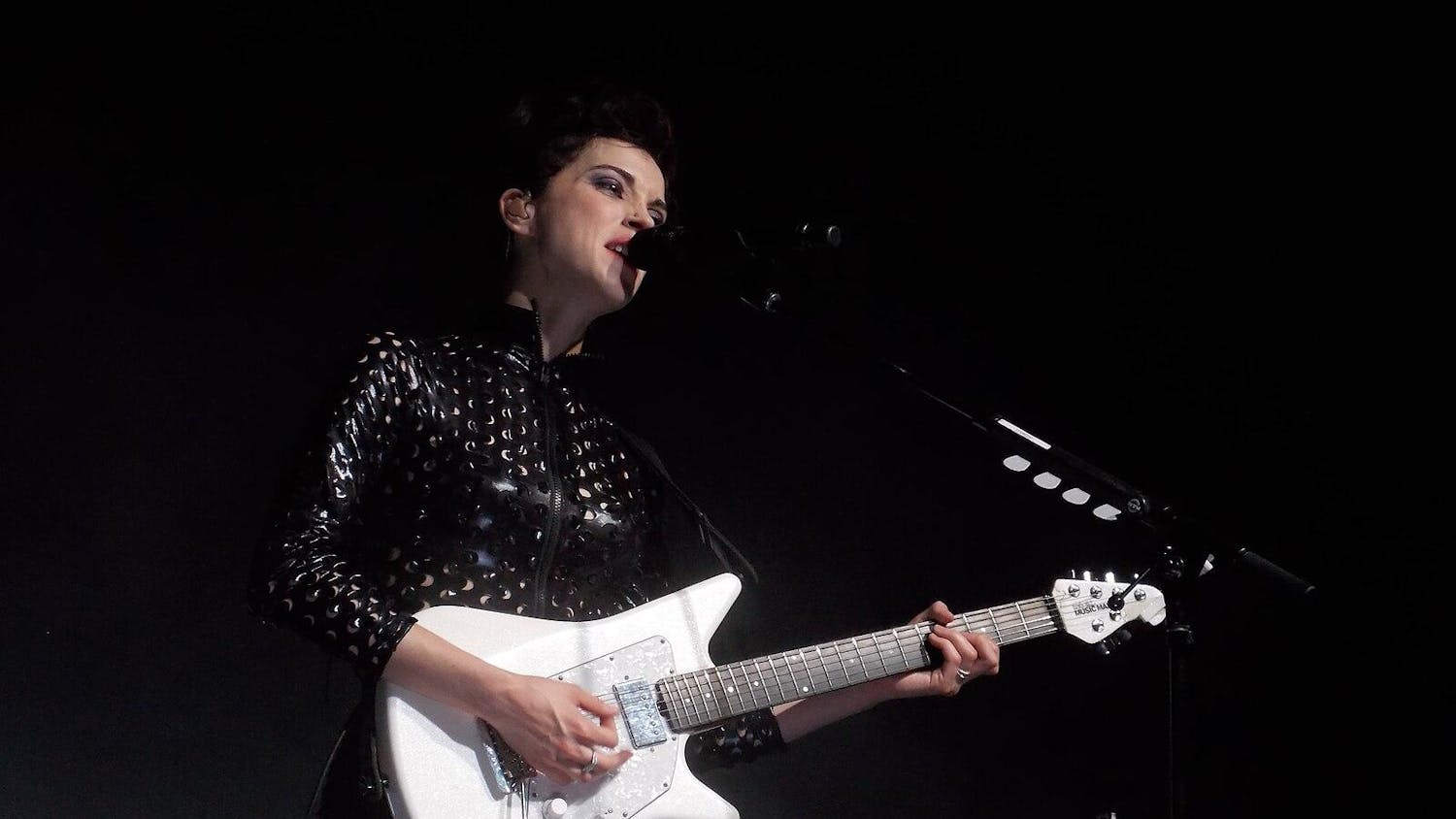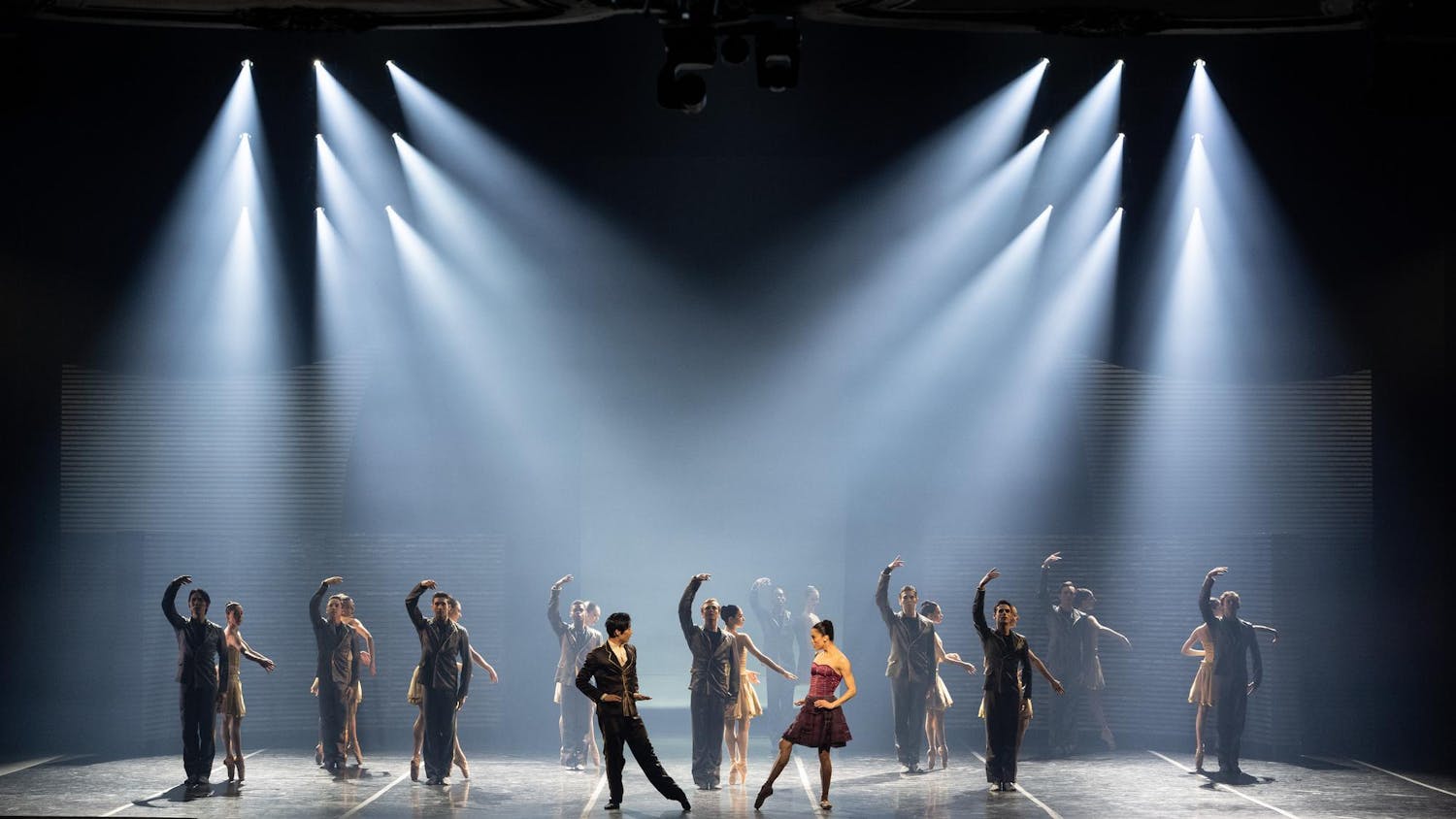Who's interviewing whom? Nothing is straightforward in Jean−Claude van Itallie's play, "Interview." Every word, action and thought is crucial, while the characters — interviewers and interviewees alike — all struggle to find and maintain their sense of individual identity.
Van Itallie's topic of singularity and the search for employment in a capitalist society is extremely relevant in this day and age. However, the generalizations and vague characterizations that make up the play also leave it lacking in specificity that, if included, would make the performance's message more powerful.
Simplicity, while intended to give the play a universal applicability, ends up making the play seem dry and flat in comparison to the stories that abound around us. On the whole, though, the play succeeds in driving home a message about what it means to be living in today's society.
The stage is simple: Black boxes and white iron chairs are the only props the actors use as they travel beyond the scene of the interview to parties, public transport and the gym. The play begins with the central applicants — a house painter (Nick Miller), a floor washer (Corina Bucur), a banker (Mikey DiLoreto) and a lady's maid (Kiki Samko) — undergoing an arduous interview process before four masked interviewers. The four applicants, while originally comfortable with who they are and why they are there, experience a wide range of emotions in the first scene, setting the stage for later insights into their lives outside of the interview room.
The interviewers are harder to judge: They first come off as instantly unlikable, cold interrogators for whom it is demanding to feel any empathy. Their masks are garish, Halloween−esque items that add an even spookier element to the already bare stage. We immediately identify with the prospective employees onstage as a result of the lights coming down over the interviewers' already obscured faces — we've all taken our turn in the hot seat before distant, inscrutable figures.
As the questions continue to cycle, though, the applicants achieve a sense of solidarity. They begin to move with each other in choreographed exactitude and at one point literally jump on the backs of their interviewers, so that the roles become reversed. This dynamic is then further confused by games of leapfrog and circular movement, and by our growing sense of identification with the interviewers. This evolving relationship between interviewers, interviewees and audience positively reflects the ability of the actors to not only give us a representation of a system, but to also show us the complications and incongruities within that same system.
Fissures in the overarching ideology being considered take the form of memory loss, visits to a psychiatrist (Erin Rae Zalaski) and prayer, which all define moments of questioning and revelation. Who these characters are is at the center of the play, but unfortunately, it is at times difficult to follow the trajectory of the characters' lives through such a convoluted narrative. The moments are alternatively passionate, devastating and enlightening, but they are scattered throughout the play in such a way as to make them disjointed and less effective as a whole.
For instance, the age and origins of the floor washer take quite a long time to determine. While Bucur pulls off an especially moving scene that takes place on the metro, her performance is otherwise hard to read.
The play only allows for glimpses of character development that leave gaping holes in the characters' personalities. We only see them at instances of extreme pain, anguish or despair that ultimately make them appear incomplete.
In fact, the whole play has a very mechanical way of dealing with a very human topic. This machine−like representation of humanity is prone to stereotypes, brief episodes and choreographed movement that traps the characters inside rehearsed motion and speech. During a time when concerns over future employment and aging are prevalent, the somber social criticisms of the play definitely strike a chord, but at the same time leave little hope for change.
Nobody wants to wear a been−there, done−that costume this Oct. 31, but as Halloweekend draws nearer and nearer, the pressure is on to think of something groundbreaking. We've compiled a list of costumes that promise to get you noticed — and if this fails, go "Mean Girls" (2004) with lingerie and some form of animal ears. (Yes, fellas will turn heads dressed like this, too.) 10. "Jersey Shore" Season 10: Do your laundry, spray on a tan, gain 15 pounds and fist−pump your way to Halloween costume awesomeness. 9. Jonathan Franzen: It's okay if you don't get this one. Take our advice and slap on a pair of thick glasses and a smug look: you'll be sure to get some English−major booty come Halloween night. 8. Green Man: Popularized by Charlie Kelly from "It's Always Sunny in Philadelphia," Green Man wears a skin−tight Lycra suit that covers his entire body. Show off your curves in the creepiest manner imaginable. 7. An owl: "Who? Who? Who is that wearing that fine owl costume?" You'll hear that one all night if you opt to be an owl for Halloween this year. Costume contest winner for sure. 6. Kenny Powers: Only on Halloween can you justify growing out a mullet, swearing profusely and making overly forward come−ons to everyone you see. 5. Lady Gaga in her meat dress: Made with real meat. Unless you're a vegetarian, in which case, use tofu. 4. Zombie Michael Jackson: Still both funny and too soon a year later. 3. Slutty Jumbo: Mm, baby got back. 2. Humble Kanye West: You have two weeks to figure this one out. And ... go! 1. A Ghost: Take a white sheet, cut two holes for your eyes and drape over your head: Spooky fun for all!
--





